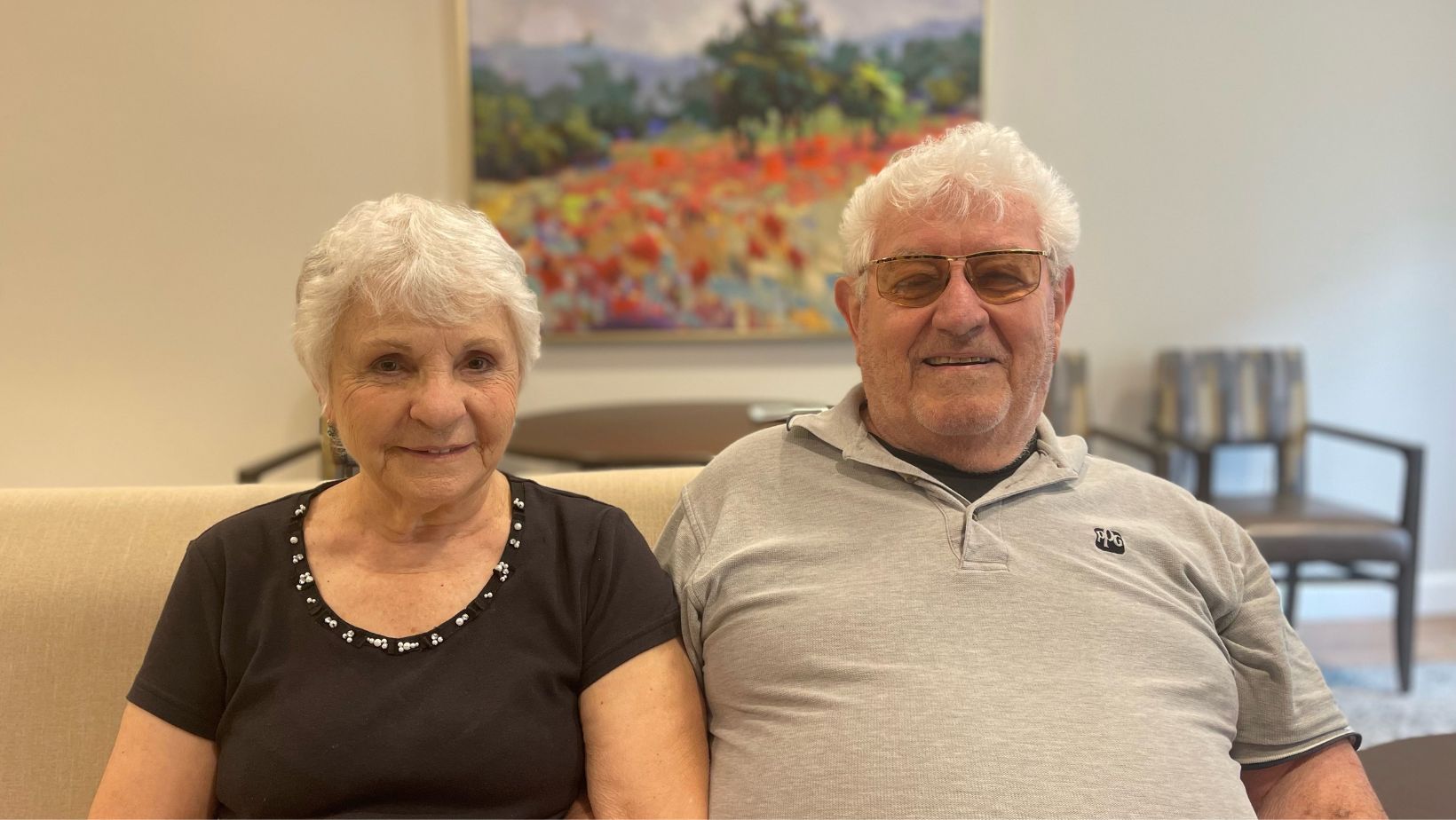
When planning for the future, many aging adults envision a future where they age in place with their spouse. However, the reality is that aging couples often experience different health challenges, which require different needs and access to different levels of medical care. Often in these situations, one spouse will assume the role of caregiver for the other spouse. While this scenario can work well for a while, at some point during the aging process, the responsibility of caregiving can become too overwhelming—physically, emotionally or financially. In fact, according to the U.S. Census Bureau, many senior couples will encounter health challenges or experience the various effects of aging at different rates. This often results in one spouse needing professional support and medical care much sooner than their loved one. The good news is that it’s possible to find an assisted living community that will fit the needs of both spouses, however different they might be.
Many senior living communities offer a wide variety of services and accommodations specifically designed for older adults. Continuing Care Retirement Communities, often referred to as CCRCs, offer multiple levels of care ranging from independent living and assisted living all the way through long-term and skilled nursing care. These communities are a great option for couples who wish to age together as most provide access to different levels of care all on one campus. However, it’s important to understand that these communities often require a location change when moving up the continuum of care, depending on the structure of the community.
Many assisted living communities allow spouses to live together, which can help ease the transition to a senior living community. In fact, according to a study published in the National Library of Medicine, continuing to live with your spouse can help reduce the risk of agitation, anxiety, and feelings of loneliness and depression. Assisted living communities are designed for older adults who require additional support with activities of daily living such as personal hygiene, managing medications, assistance with meal preparation, laundry, housekeeping, and access to social opportunities. Many assisted living communities offer apartment-style living that promotes feelings of independence but also provides access to medical care and personal assistance when needed. Many aging couples who opt for assisted living experience the following benefits:
According to the Centers for Disease Control and Prevention, loneliness and isolation are linked to serious health conditions for older adults. As we age, our support networks get smaller, especially as our friends and spouses pass away or experience a decline in their health. Assisted living communities allow older adults to socialize with peers and connect through shared interests and experiences. Assisted living communities also offer spouses the ability to age together despite their varying needs.
Many assisted living communities offer meals, accommodations, and services for a fixed monthly fee. In many cases, this can be cost-efficient for older adults when compared to managing a home and hiring private duty care for additional support.
It can be difficult to ask for help no matter your age. Many older adults struggle with asking their spouse to act as their caregiver even if they are physically and emotionally able to handle the responsibility. Assisted living communities provide personal care assistance so couples can get the care they need while also maintaining their privacy and dignity.
Some assisted living communities provide specialized memory care accommodations, usually within the assisted living building. This area is secured, allowing residents to engage in activities and events without the risk of wandering or getting lost. Many communities, such as Maplewood Senior Living, provide Memory Care day services for individuals living with a spouse outside of the memory wing. This allows couples to participate in activities they enjoy while knowing their spouse is safe and engaged. An example of this successful living situation is working with our residents Teresa and Nino.
“Nino and I recently moved into Maplewood and have been adjusting well to this next chapter in our lives. When Nino faced some health challenges and memory loss, our caring children, concerned about my ability to handle everything on my own, suggested the move. Luckily, their intuition was spot-on! We are very social people so they thought we’d thrive in a community – and they were right. Initially, we moved into assisted living but when Nino began wandering, the team suggested he spend the day in Currents while I enjoyed my activities. I’m a social butterfly and love meeting the other residents and participating in the engaging programming. I read to the children at the preschool across the street, have joined the short story series, and spend plenty of time socializing. Nino is flourishing in Currents. He’s made friends, sings in Italian (our native language), and our children are happy. At the end of the day, I take him “home” to our apartment. We feel like we live in a luxurious hotel, where all our needs are meticulously taken care of, and the weight of stress and anxiety has lifted.
— Teresa, for herself and her husband, Nino, Maplewood Senior Living Residents
Aging together with a spouse presents unique challenges that can be solved by moving into an assisted living community together. Here are some of the most common challenges older adults experience and how assisted living can help solve them, as provided by AgingCare:
Aging looks different for each person—this is something we know well at Maplewood Senior Living. Our assisted living communities allow couples to age together despite their varying health needs. For example, many couples at Maplewood Senior Living take advantage of our Memory Care day center. For Resident A, the memory care center allows his spouse to participate in activities specifically designed for those with Alzheimer’s disease or other forms of dementia. Insert testimonials here. To learn more about our Assisted Living offerings, please contact us—we’d love to hear from you.
Sign up to receive the latest posts straight to your inbox.
Keep Reading